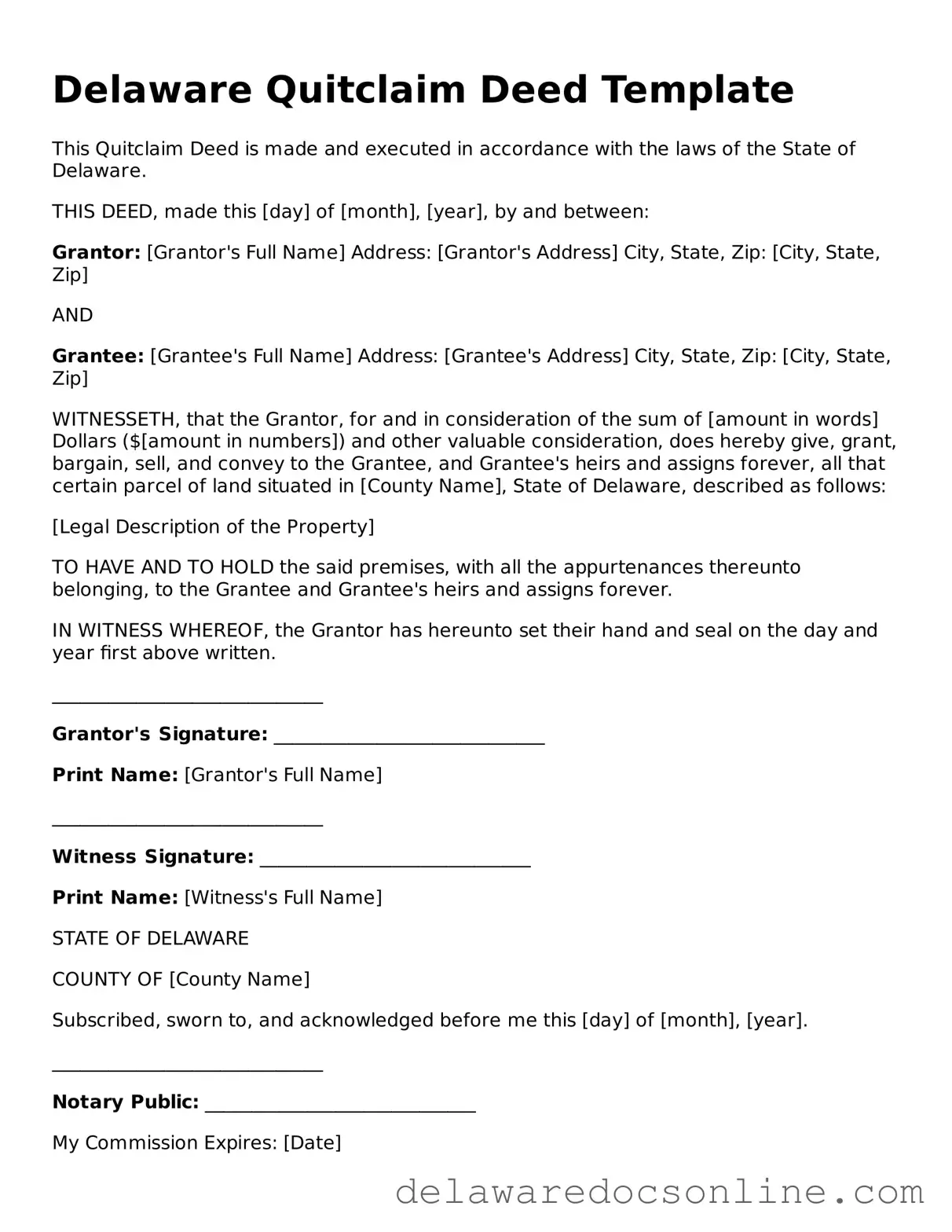Delaware Quitclaim Deed Template
This Quitclaim Deed is made and executed in accordance with the laws of the State of Delaware.
THIS DEED, made this [day] of [month], [year], by and between:
Grantor: [Grantor's Full Name]
Address: [Grantor's Address]
City, State, Zip: [City, State, Zip]
AND
Grantee: [Grantee's Full Name]
Address: [Grantee's Address]
City, State, Zip: [City, State, Zip]
WITNESSETH, that the Grantor, for and in consideration of the sum of [amount in words] Dollars ($[amount in numbers]) and other valuable consideration, does hereby give, grant, bargain, sell, and convey to the Grantee, and Grantee's heirs and assigns forever, all that certain parcel of land situated in [County Name], State of Delaware, described as follows:
[Legal Description of the Property]
TO HAVE AND TO HOLD the said premises, with all the appurtenances thereunto belonging, to the Grantee and Grantee's heirs and assigns forever.
IN WITNESS WHEREOF, the Grantor has hereunto set their hand and seal on the day and year first above written.
_____________________________
Grantor's Signature: _____________________________
Print Name: [Grantor's Full Name]
_____________________________
Witness Signature: _____________________________
Print Name: [Witness's Full Name]
STATE OF DELAWARE
COUNTY OF [County Name]
Subscribed, sworn to, and acknowledged before me this [day] of [month], [year].
_____________________________
Notary Public: _____________________________
My Commission Expires: [Date]
